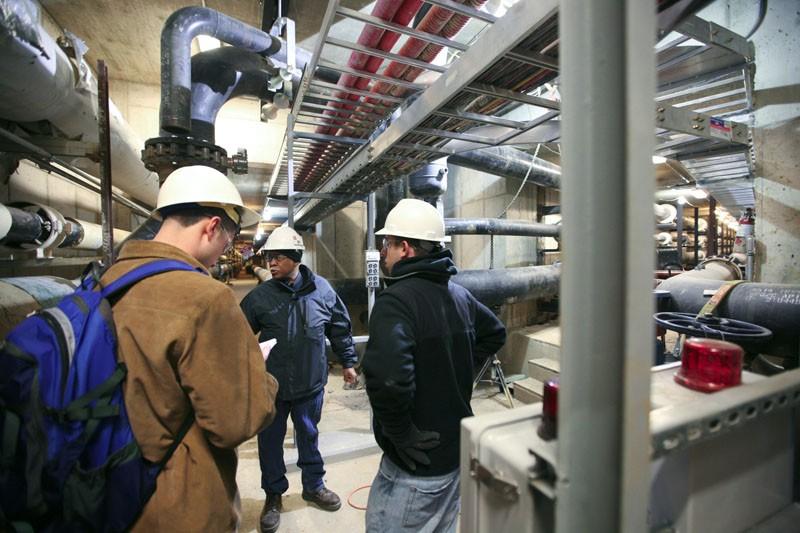GV Underground: Tunneling into campus’ biggest mystery

GVL / Eric Coulter With the help of James Moyer, the Assistant Vice President of Facilities Planning, the Lanthorn was granted access to the service tunnels underneath the university. Pictured here is the junction that joins to the new tunnels that extend to the new library to the older, existing tunnels.
Feb 2, 2012
There is a system of tunnels connecting nearly every building on Grand Valley State University’s Allendale Campus, and while shrouded in mystery and myths, the tunnels hide no treasure or bones of past GVSU presidents.
James Moyer, assistant vice president of Facilities Planning, recently helped the Lanthorn get to the bottom of one of GVSU’s most mysterious features, leading members of the Lanthorn staff on a tour of GVSU’s utility tunnels recently, beginning at an unmarked doorway on the side of the Cook-DeWitt Center.
The system of tunnels runs from the campus utilities building near Lake Michigan Drive, south through the heart of campus with branches connecting to the Padnos Hall of Science, the new library and the lake halls and ending at the old Grand Valley Apartments in the south. Inside the tunnels run miles of large pipes carrying chilled drinking water, medium-sized pipes filled with steam for heating buildings and sidewalks, racks holding fist-sized wires for electricity and smaller cables for Internet and telephone communications.
With so much pipe and wire running through the tunnel system, there are points where people have a hard time fitting between everything.
This problem is especially obvious in older sections of the system where extra pipes and wiring has been added to accommodate the growing campus. At the entry point underneath Cook-Dewitt, a person has to squeeze through a gap above a 24-inch water pipe and an 18-inch steam pipe to gain access to the tunnel.
Ignoring the contortion required to navigate the GVSU Underground, the system of tunnels is quite comfortable due to heat radiating from the heavily insulated steam pipes and the cool glow of the occasional light bulb mounted on the ceiling, six feet below the sidewalk. If not for the cobwebs, it would be a decent place to do homework.
The tunnels, however; would not have been a very good place to get school-work done during the intense rain storms on June 21, 2011. The intense rainfall on and around that day caused severe flooding throughout the tunnel complex, Moyer said. Three feet of water filled the concrete caverns throughout the system due to water collecting in, and then flowing from, the open basement of the new library, Moyer said.
Cleanup efforts from the flooding are still ongoing nearly six months later. The cement floors still bear signs of sediment from the floodwaters, and the iron water pipes lie stripped of their insulation, which was destroyed in the incident.
While much of the network of tunnels on the Allendale Campus is nearing 40 years old, some sections have yet to be put into use. A section linking the main line to the new library’s basement is not yet in operation, though it has all of its fixtures installed and is considerably brighter and roomier than the rest of the system. The new branch line even has the beginnings of what could be a short connection to a possible science lab building just north of the soon-to-be-completed Mary Idema Pew Library Learning and Information Commons.























